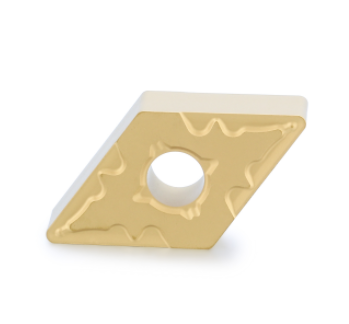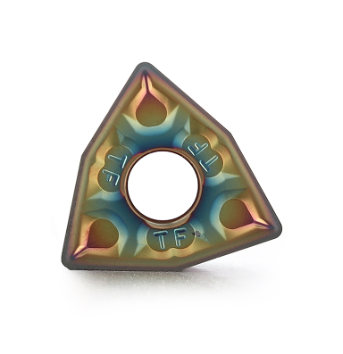How to Select the Right Carbide Insert
Views: 1224
Author: Site Editor
Publish Time: 2021-08-30
Origin: Site
The menu of available coatings for carbide inserts has expanded ten-fold in the past ten years. Selecting the one that can produce low cutting forces with smooth cutting action, good surface finish and long tool life becomes the user's dilemma.
What are Carbide Inserts?
Carbide inserts are tools used to accurately machine metals, including steels, carbon, cast iron, high-temperature alloys, and other non-ferrous metals. These are replaceable and come in various styles, grades, and sizes.
There are some primary considerations on how to choose the correct carbide inserts. One of those is the cutting operation, whether turning, Milling, or drilling. Carbide is more expensive per unit than other typical tool materials, and it is more brittle, making it susceptible to chipping and breaking. To offset these problems, the carbide cutting tip itself is often in the form of a small insert for a more enormous tipped tool whose shank is made of another material, usually carbon tool steel. This benefits from using carbide at the cutting interface without the high cost and brittleness of making the complete tool out of carbide. Most modern face mills use carbide inserts and many lathe tools and endmills.

Carbide inserts are used at high speeds that enable faster machining, ultimately resulting in better finishing. Choosing a correct carbide insert is vital because it can risk damaging the insets, machine, and cutting product.
Material of Inserts
Inserts are made of several different materials but commonly constructed of carbide, micro-grain carbide, ceramic, CBN, cermet, diamond PCD, cobalt, silicon nitride, and high-speed steel. The coating over the insert increases the wear resistance and life span of this cutting tool. These coatings include titanium nitride, titanium carbonitride, titanium aluminum nitride, aluminum titanium nitride, aluminum oxide, chromium nitride, zirconium nitride, and diamond DLC.
Manufacturing of Carbide Inserts
Let's discover the manufacturing process of carbide inserts to know better about its types and uses;
The suitable carbide insert for specific machining operations helps to stay ahead in competition among the cutting tools industry.
Carbide inserts, mainly tungsten and cobalt, start in powder form. Then in the mill, the dry raw material is mixed with a combination of ethanol and water. This mixture results in a gray slurry solution with a consistency like a yogurt drink. This mixture is dried and then sent to a laboratory for a quality check. This powder comprises agglomerates, small balls of 20 to 200 microns diameter, and then transported to pressing machines where inserts are made.

Primary considerations on how to choose the right carbide inserts
Metal cutting operation
Milling
Turning
Drilling
Material to be machined
Soft tool steel
Hardened tool steel
Aluminum
Brass or bronze
Any other alloy
Type of machine tool
5 Axis
High speed machining center
Conventional VMC
Manual milling machine
Horizontal milling machine
CNC lathe
Engine lathe
Swiss type
Other machine tools

Other considerations for choosing carbide inserts
Skill level of operator, machinist or toolmaker
Budget available for tool holders, vises and carbide inserts
Time schedule
Surface finish requirements
Capability of milling machine, lathe or other machine tool
Dimensional tolerance requirements
In most cases, there never will be one cutting tool insert solution that works for everyone. There are too many variables with respect to different machines, various coolants, speeds and feeds, and machining environments. What this article has attempted to show, in as brief a context as possible here, are basic starting points for insert selection for the various mold materials. The ultimate selection is left to you, hopefully now possessing a better knowledge.
If any other question, please contact us:
- Tel: +86 769-85646282
- Email: info@dohrecnc.com
- Address: Room 203, Building 2, Songhu Zhigu Research Center, No. 6, Minfu Road, Liaobu Town, Dongguan, Guangdong, China





